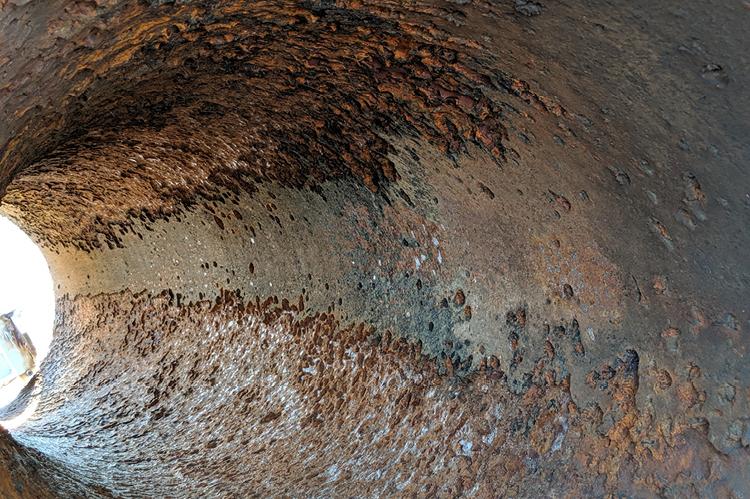Lessons Learned on 20 years of challenges to internal corrosion protection of subsea pipelines-corrosion inhibitor or pH stabilization?

The three phase fluid of the massive South Pars reservoir under the Persian Gulf, is transmitted 100Km to onshore facilities via numerous 32” API 5L pipelines. The wet sour fluid cont ains 0.5 mol% of H2S and 1.7 mol% of CO2 which forms a hostile environment to carbon steel. Hence, as per form er laboratory researches at design stag e in about 20 years ago, two different mitigation methods were concl uded to tackle internal corrosion and hydrate formation issues.
pH stabilization technique (PST) was devel oped during the project conceptual phase and impl emented for the first time for Sour system by TOTAL Company in the in oil and gas sector; and the second one was conventional injection of film forming corrosion inhibitor. Since then, PST has been carried out by continuous injection of 70 wt.% Lean Mono Ethylen Glycol and 4 wt.% of Methyl Diethanol Amine, as the main method. In the meantime, fil m forming inhibitor injection was also deployed as the backup when PST was unavailable.
PST requires a robust MEG regeneration system. when t he fluid is enriched with calcium and carbonate ions during water formation influx, it can lead t o sever scale deposition and clogging the line. On the other ha nd, corrosion inhibition by film forming has some ambiguities such as p rotection of metal beneath the sludge, or the reliabil ity of residual corrosion inhibitor in the presence of low dosages of kinetic hydrate inhibitor.
In this paper, mass spectroscopy and high pressure liquid chromatography on filed and synthetic samples is deployed to pinpoint the actual error value and compensation rate. Consequently, a reasonable deg ree of certainty for the amount of residual corrosion inhibitor is figured out to increase the reliability in the pipeline integrity management strategies.

